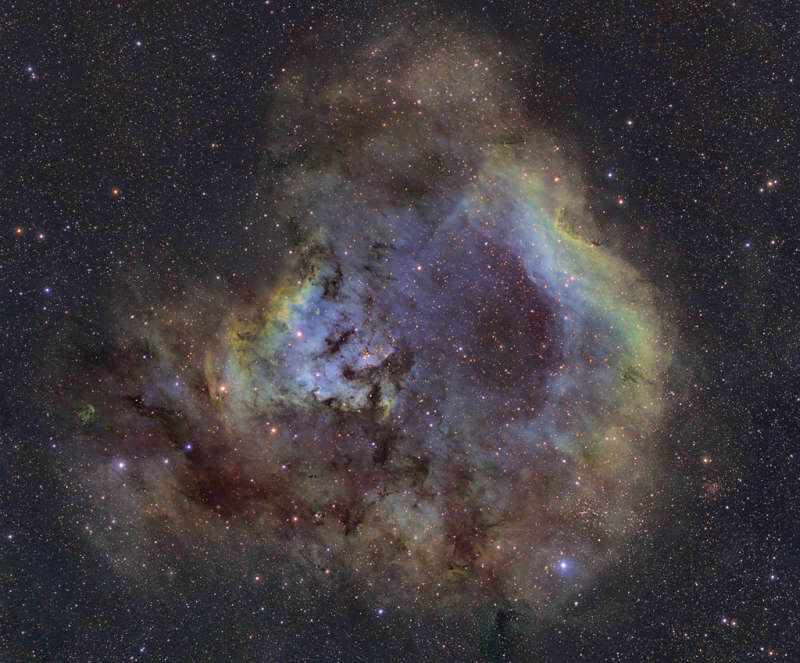Credit & Copyright: Steve
Cannistra
(StarryWonders)
Explanation:
Hot, young stars and
cosmic pillars
of gas and dust seem to crowd into NGC 7822.
At the edge of a giant
molecular cloud toward the northern
constellation Cepheus, the glowing star forming region
lies about 3,000 light-years away.
Within the nebula, bright edges and dark shapes stand out in this
colorful
skyscape.
The image includes data from
narrowband filters,
mapping emission from atomic oxygen, hydrogen, and sulfur into blue,
green, and red hues.
The emission line and color combination has become well-known as the
Hubble palette.
The atomic emission is
powered by energetic radiation from
the central hot stars.
Their powerful winds and radiation sculpt and erode
the denser pillar shapes and clear out a
characteristic cavity light-years across
the center of the natal cloud.
Stars could still be forming inside the pillars by
gravitational collapse but as the pillars are
eroded away, any forming stars will ultimately be cutoff from their
reservoir of
star stuff.
This field of view spans over 40 light-years at the estimated distance
of NGC 7822.
1999 2000 2001 2002 2003 2004 2005 2006 2007 2008 2009 2010 2011 2012 2013 2014 2015 2016 2017 2018 2019 2020 2021 2022 2023 2024 2025 |
Yanvar' Fevral' Mart Aprel' Mai Iyun' Iyul' Avgust Sentyabr' Oktyabr' Noyabr' Dekabr' |
NASA Web Site Statements, Warnings, and Disclaimers
NASA Official: Jay Norris. Specific rights apply.
A service of: LHEA at NASA / GSFC
& Michigan Tech. U.
|
Publikacii s klyuchevymi slovami:
emission nebula - star formation - emissionnaya tumannost' - zvezdoobrazovanie
Publikacii so slovami: emission nebula - star formation - emissionnaya tumannost' - zvezdoobrazovanie | |
Sm. takzhe:
Vse publikacii na tu zhe temu >> | |
